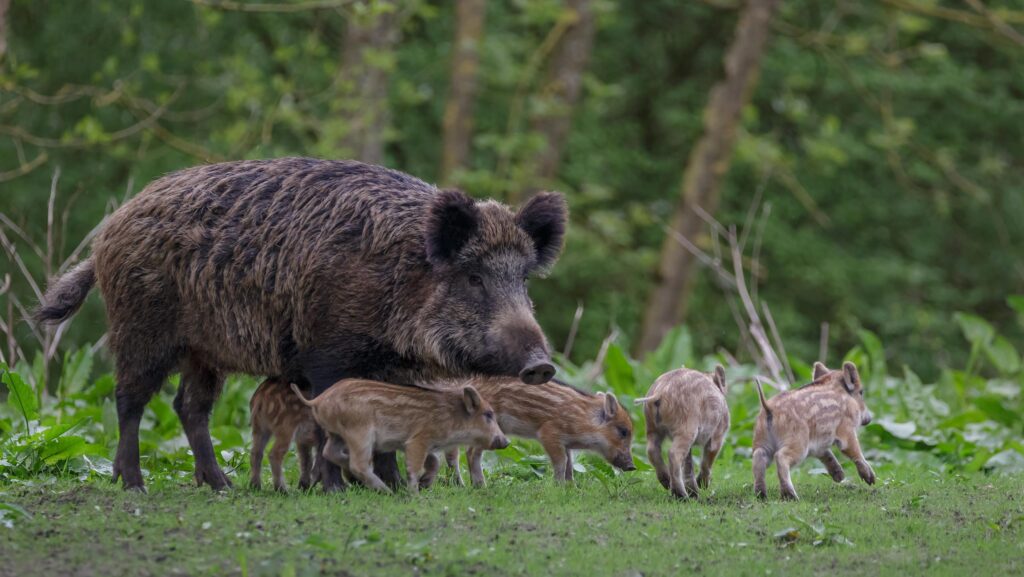Diseases pose worrying risk to UK livestock this summer
 © Adobe Stock
© Adobe Stock Diseases such as bluetongue and African swine fever (ASF) pose potential risks to UK livestock this summer, according to veterinary professionals.
The prevalence of these diseases in UK herds would also be likely to have a negative impact on export trade to certain global markets.
Speaking at AHDB’s Red Meat Export Conference on 13 June, UK chief veterinary officer Christine Middlemiss said that with warmer weather, she fully expected more infected midges carrying bluetongue to cross over from Europe.
See also: New bluetongue control strategy revealed by Defra
Bluetongue was first confirmed in England last November from infected midges that are believed to have been blown over from the Netherlands.
Dr Middlemiss said the Netherlands had recorded clinical signs with sick and dying animals. However, there had not yet been any clinical cases in the UK, and all confirmed cases were found through surveillance of animals which appeared to be well.
“We are working very closely with vaccine manufacturers,” she said. “It’s good that they are now vaccinating in the Netherlands. That should reduce our risk a bit.”
She added that the industry was working to get a dossier of information that could be approved by the end of the year, but it would not be in time to stop the disease spreading this year.
Schmallenberg
Like bluetongue, cases of Schmallenberg have been more prevalent this year.
There is a vaccine available for Schmallenberg in the UK, but manufacturing had stopped due to the lack of prior demand.
African swine fever
The UK is still at a medium risk for ASF, and the virus continues to spread in wild boar in Europe, according to Dr Middlemiss.
Human-mediated transmission is classed as higher risk, as longer jumps between countries can take place.
Dr Middlemiss said that until there was a vaccine available in the UK, the risk status would not change.
However, a huge amount of research work was going on to find a vaccine, by organisations such as the Pirbright Institute.
“There are vaccines people hear about being used in Asia, and they are help there because they are suppressing the disease” she said.
“When you have 80% of your pig population on farms infected and when you are so reliant on pork for domestic consumption, there is some benefit from suppression.
“But they are not vaccines that would help stamp out and get rid of the virus, and that is what we in the western world are looking for.”
Bovine Spongiform Encephalopathy
The UK is currently classed as a “controlled risk” country for Bovine Spongiform Encephalopathy (BSE); however, the industry is pushing for this to be downgraded to “negligible risk” status.
Dr Middlemiss said despite a case of BSE being reported in Scotland last year, the UK was able to apply for negligible status because all the necessary controls were in place.
“Finding this case is saying our controls are working, and we always expected there might be a tail end of cases,” she said.
“The good news is that we are finding them; they’re not hidden. This animal was never destined for the food chain and was never going to be exported.”
A case is due to be submitted to the World Organisation for Animal Health in a few months’ time to move the UK to negligible risk, and it is due to be voted on in May 2025.
Avian influenza
Cases of avian influenza on US dairy farms have had an impact on trade, with Columbia recently banning imports from some US states as a result.
Dr Middlemiss said the mixed strain currently being seen in the US was a mix of high-pathological and low-pathological strains.
She said most of the transmission on US farms was mechanical, such as through equipment in dairy parlours. She noted that pasteurisation killed the virus so the risk of it arriving in the UK in dairy products was very low.
Bovine TB
The incidence rates of bovine TB in higher risk areas has fallen by about 7%, according to Dr Middlemiss.
She said: “When you translate that into the number of herds and animals, it is massive.”
She put the fall down to a combination of increased cattle controls, skin testing and gamma testing, and the badger cull.”
Dr Middlemiss added: “You need to continue to have a variety of tools. You want to use epidemiological evidence you have of what is driving an outbreak, and use various mitigations against those risk pathways to get on top of diseases.”
